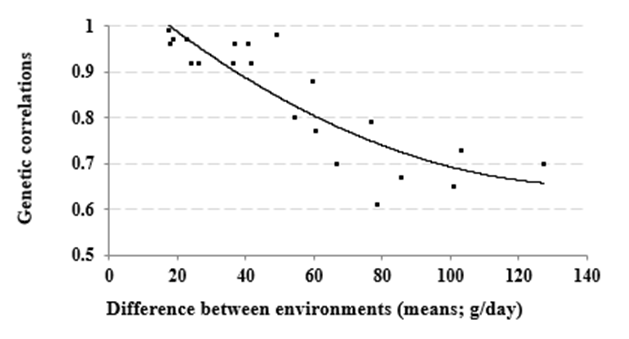



How to breed a robust pig
Developments in pig breeding have led to considerable positive genetic changes in production traits due to direct selective pressure on traits such as growth rate and feed efficiency. These genetic improvements in efficiency and productivity, however, have seen attendant increases in high physiological demands, which may have unfavorable consequences on productive longevity of farm animals (Knap and Rauw, 2009).Pius B. Mwansa, Ph.D.
Today, pigs are expected to perform in a variety of environmental conditions/challenges encountered in commercial operations. This versatility in farm animals was defined by Knap (2005) as ‘the ability to combine a high production potential with resilience to stressors, allowing for unproblematic expression of a high production potential in a wide variety of environmental conditions’. This definition of adaptability is verbose but does capture the component elements more inclusively. Genetic companies regularly pay some attention to functional traits in their breeding programs, albeit, mostly in phenotypic selection consideration (for example health, fertility, locomotion, teat number, structural soundness, and mortality at various stages of life).
Furthermore, breeding programs expect genetic improvements made in nucleus units to translate into desirable improvement realized under commercial management/environment conditions. A genotype by environment (GxE) interaction occurs when genetic improvement at the nucleus level does not result in a very similar level of improvement at the commercial level. Similarity in genetic performance of the same trait in different environments can be measured by directly comparing the genetic expression of a given trait in both environments, this is commonly measured as the genetic correlation. As the genetic correlation moves away from 1.0 (perfect association in both environments) then the genetic expression of the trait is different in each environment.
Figure 1 below is a graphical example from Li and Hermesch (2013), showing how the genetic correlation between growth rate in two different environments changed as the average difference in growth rate increased. Environments where the difference in average ADG was 40 grams/day or less had very similar genetic correlations (>0.90). However, as ADG recorded in two environments differed by 60 g/day or more resulted in lower genetic correlations and more variability in the genetic correlation values. Thus, in this example when the difference in average ADG was greater than 60g/day the genetic impact on expression of the trait was different in the two environments and clearly a GxE interaction occurred. Thus, the ADG in the two environments may be regarded as different traits in genetic evaluation systems in order to account for GxE
interaction effect.
Figure, 1. Genetic correlations for growth rate defined as a separate trait in each environment declined as the difference in mean growth rate between two environments increased (Li and Hermesch 2013).
Breeding objectives aim to produce animals with a high-level of performance in a wide range of environmental conditions and management systems. Undoubtedly, breeding objectives should be defined for commercial environments (not nucleus) and optimal selection indexes (tools) should account for GxE interactions that may exist for economic traits of interest. A very effective way to accomplish this is to incorporate commercial data along with nucleus data in the genetic evaluation of nucleus pigs. While this approach has been difficult to implement effectively in the past, the use of genomic tools has created new opportunities in this approach. Genesus has recently initiated a large research project focused on the use of genomics to enhance nucleus level selection by incorporating commercial herd data into its genomic evaluation system.
Selection of pigs with the inherent ability to achieve high level productivity in diverse environments is, for Genesus Inc., a high-ranking objective because it is a key to maximizing profitability for our customers in the pig genetic improvement value-chain.
References:
Knap PW .2005. Breeding robust pigs.
Australian Journal of Experimental Agriculture 45, 763–773.
Knap, P.W and W. M. Rauw .2009.
Selection for high production in pigs. In 'Resource allocation theory applied to farm animal production.(Ed. WM Rauw.) pp. 210-229. (CABI: Wallingford, UK)
Li, L, and S, Hermesch. 2013.
Genotype by environment interactions for average daily gain using multiple-trait analyses in Australian pigs. Proc. Assoc. Advmt. Anim. Breed. Genet. 20, 323-326.









